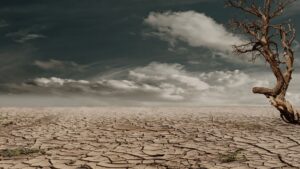New research shows that prolonged heat and dryness in Colorado’s San Luis Valley significantly increased the risk of kidney disease between 1984 and 1998. The findings highlight a direct link between climate change and human health particularly for agricultural workers in arid, drought-stricken regions.
 Kidney Health Threatened by Climate in High-Altitude Desert
Kidney Health Threatened by Climate in High-Altitude Desert
The San Luis Valley, North America’s largest high valley desert, is now at the center of a disturbing trend: rising cases of kidney damage and disease linked to low humidity, rising temperatures, and long-term drought. A 15-year study, recently published in Weather, Climate, and Society, tracked health data from agricultural workers in the region and revealed a worrying pattern a 10% drop in humidity led to a 2% increase in acute kidney injury.
This isn’t a coincidence, researchers say. Many residents work outdoors in agriculture, making them more vulnerable to heat stress and dehydration. Between 1984 and 1998, worsening air quality from dust, wildfires, and drought intensified health risks, with water scarcity and high temperatures pushing the body’s ability to regulate fluids to its limit.
The Human Toll of a 23-Year Drought
As the region became more arid, environmental epidemiologist and study author Dr. Katherine James who has spent nearly two decades researching water and health in the Valley saw a deeper connection. Using an existing health dataset initially gathered to study diabetes risk, her team examined 15 years of clinical, behavioral, and environmental data.
The findings confirmed what earlier emergency room records from 2003–2017 already suggested: climate-related kidney injuries are on the rise. These include both acute kidney injury (AKI) a short-term condition that can recover and chronic kidney disease (CKD), a long-term condition that can be irreversible.
Vulnerable Workers on the Frontlines
Globally, 1 in 10 people suffer from kidney disease. In the U.S., that figure is more than 1 in 7 adults and that’s not including undiagnosed cases. For outdoor workers including farmers, ranchers, construction workers, and those in forestry and mining the risk is higher due to heat exposure, intense physical labor, and dehydration.
Similar trends have been observed in Florida and California, where agricultural workers face declining kidney health as working conditions become hotter and drier due to climate change
A Broader Call to Action
Dr. James and her team are not stopping here. They are involved in several projects across the Mountain West Climate-Health Engagement Hub, aimed at helping vulnerable populations cope with changing environmental conditions. These include:
- DIY air filters to reduce exposure to wildfire smoke and dust.
- Low-cost water filters to ensure safe drinking water in drought-affected areas.
- Studies on cardiovascular and mental health impacts of climate change in rural workforces.
Why This Matters
As climate change accelerates, health systems must prepare for more heat-related illnesses especially in rural, working-class communities. The San Luis Valley study offers critical early evidence that prolonged heat and drought aren’t just environmental challenges, but direct public health threats.
Solutions will need to combine climate resilience, public health infrastructure, and workplace protections to prevent worsening outcomes not just in Colorado, but around the globe.
